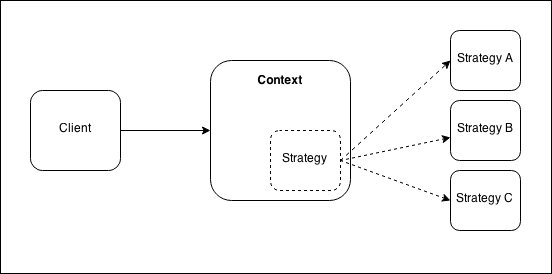The Strategy pattern enables an object, called the Context, to support variations in its logic by extracting the variable parts into separate, interchangeable objects called Strategies. The context implements the common logic of a family of algorithms, while a strategy implements the mutable parts, allowing the context to adapt its behavior depending on different factors such as an input value, a system configuration, or user preferences. The strategies are usually part of a family of solutions and all of them implement the same interface, which is the one that is expected by the context. The following figure shows the situation we just described:

The preceding figure shows how the context object can plug different strategies into its structure, as they were replaceable parts of a piece of machinery. Imagine a car, its tires can be considered its strategy to adapt to the different road conditions. We can fit the winter tires to go on snowy roads thanks to their studs, while we can...



